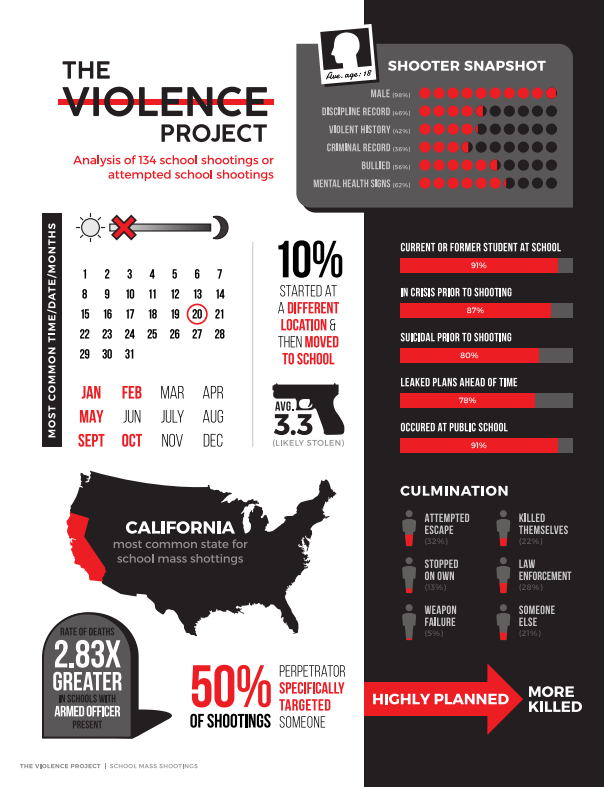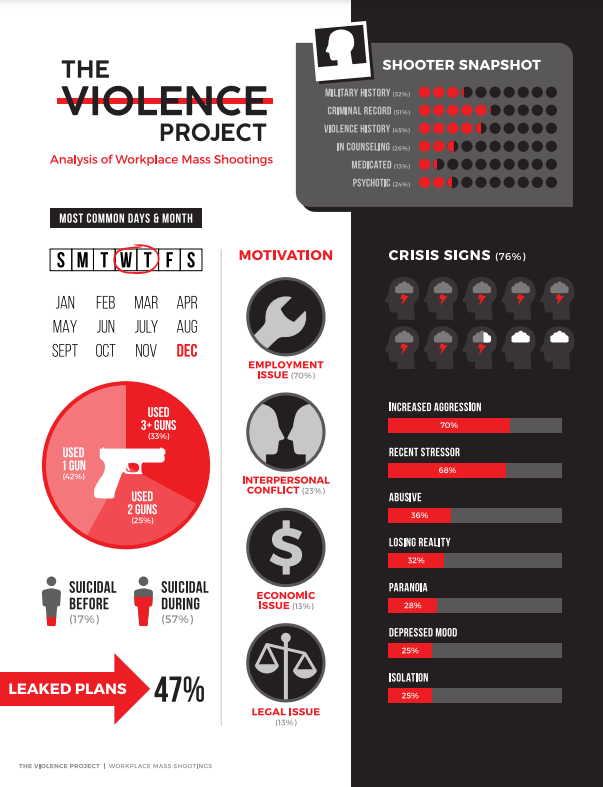Mass public shootings today are more frequent and deadlier.
Half of the 36 deadliest mass shootings in the last 120 years occurred in the last decade.
Most mass shootings are committed using handguns, but assault weapons are over-represented in these cases compared to other forms of gun violence.
97% of mass public shooters are men.
Mass public shootings most frequently occur at places of work and commerce, but trends change over time.
The shooting location also dictates demographic trends…
Because many mass public shooters are location "insiders".
Mass shooters have many grievances, but shootings motivated by hate and fame-seeking have increased since 2015.
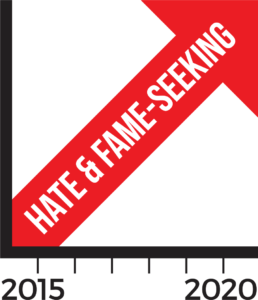
However, hate comes late along the pathway to violence and so-called "motives" can become labels used to explain away the problem of mass shootings. Mental illness, for example, is not a motive. If a mass shooter has a mental health diagnosis, this doesn’t mean that their every action is related to that diagnosis or that their symptoms caused them to pull the trigger. All we can say with some degree of certainty is that no one living a fulfilled life perpetrates a mass shooting.
The mental health of mass shooters is complicated.
Around 30% of mass shooters experienced psychotic symptoms but perpetrators were only acting on their hallucinations and delusions in about 10% of cases.

See: Peterson, J., Densley, J., Knapp, K., Higgins, S., & Jensen, A. (2022). Psychosis and mass shootings: A systematic examination using publicly available data. Psychology, Public Policy, and Law, 28(2), 280–291.
However, many mass public shooters were suicidal.

Mass shootings are public spectacles of violence intended as final acts. Whether it’s self-inflicted, or comes at the hands of police officers, or after life in prison, a mass shooting is a form of suicide. Traditional preventive measures like increased armed security or harsh criminal sentences will do little to stop them.
And 80% of them were in a noticable crisis prior to their crimes.
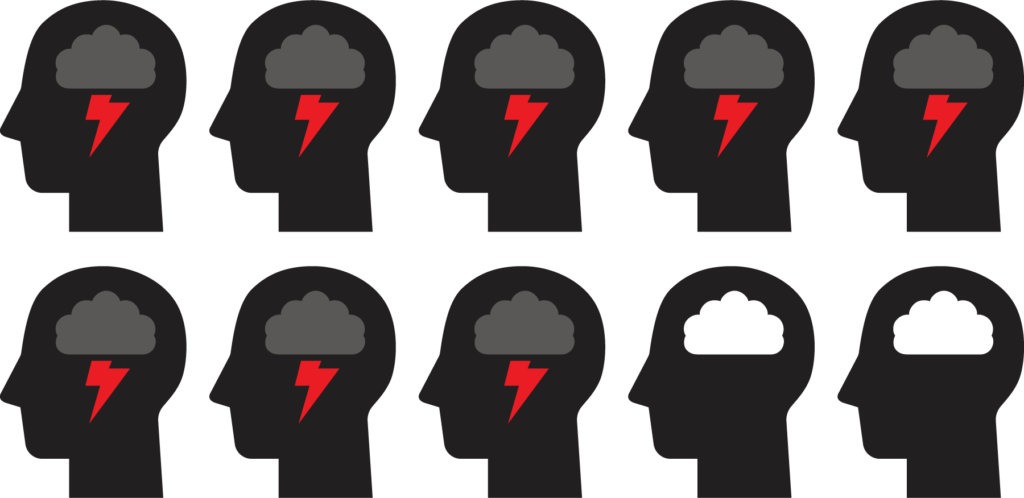
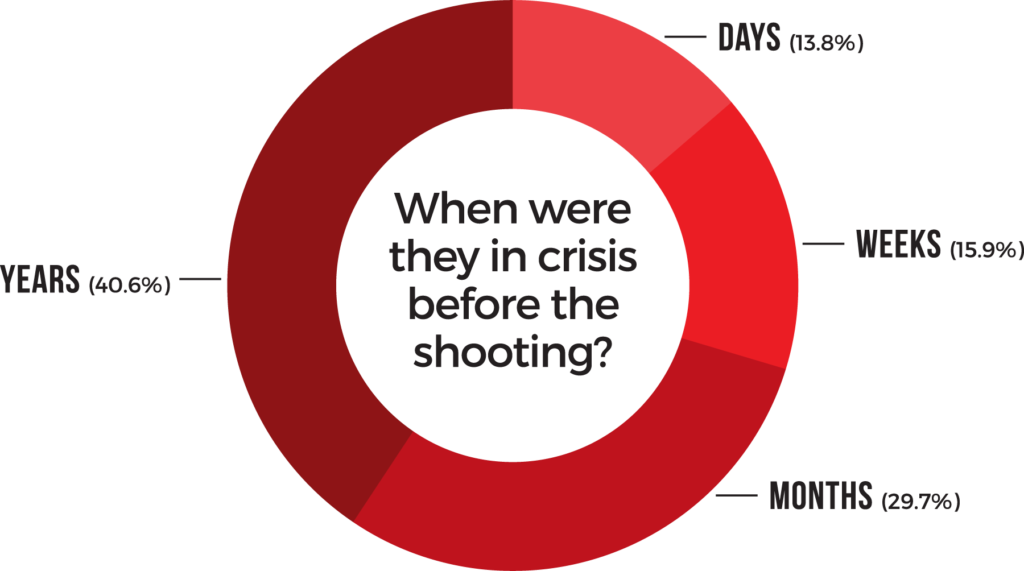
A crisis is a time-limited event that overwhelms someone's usual coping mechanisms. It looks different for different people but usually manifests in a marked change in behavior from baseline. For example, about two-thirds of mass shooters exhibited increased agitation in the run-up to their shooting.
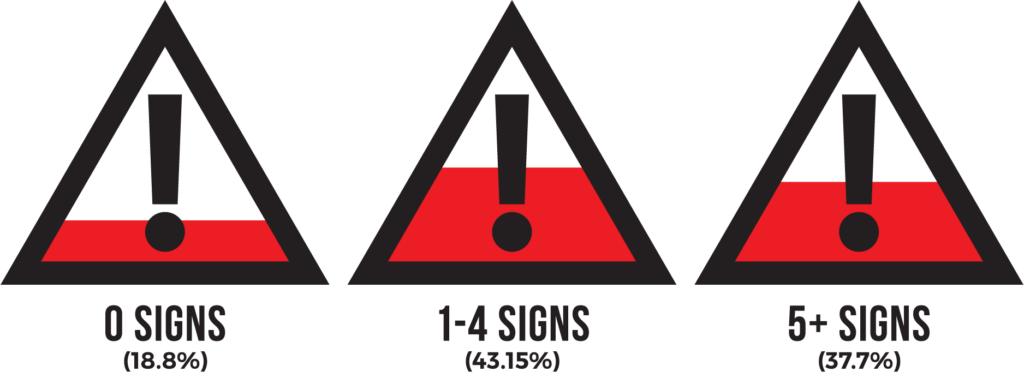
Most mass shooters exhibited between one and four crisis signs. However, more than a third of shooters showed five or more crisis signs.
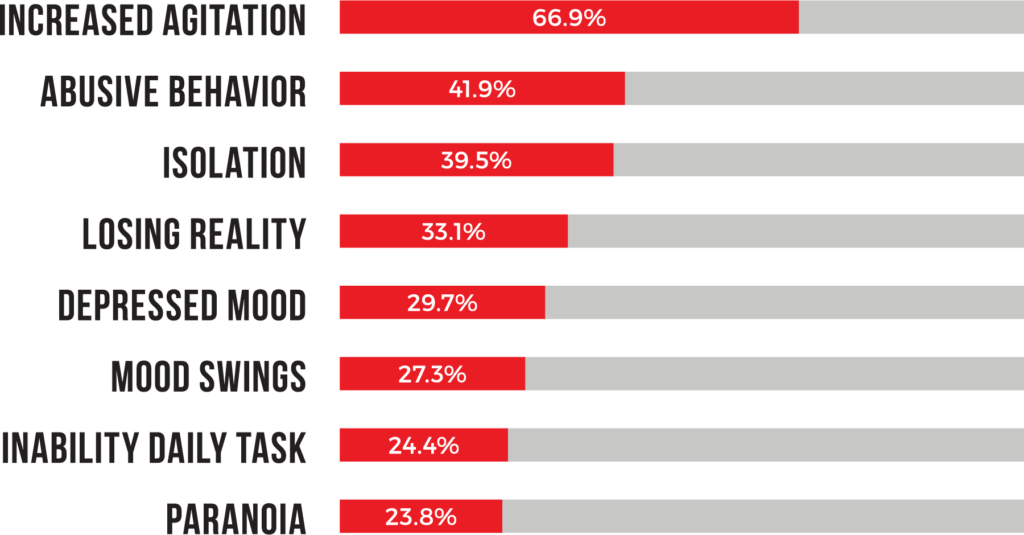
Do you like seeing our data visualized?
Follow us on Instagram @theviolencepro

